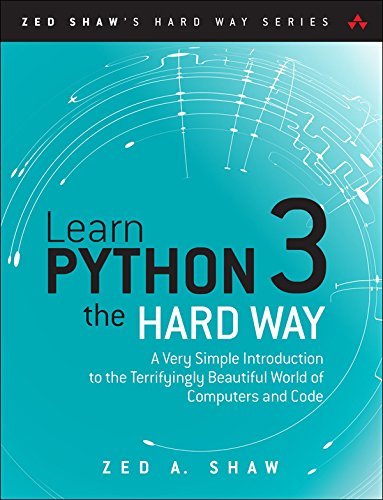Learn Python 3 the Hard Way: A Very Simple Introduction to the Terrifyingly Beautiful World of Computers and Code Link to heading
Summary Link to heading
“Learn Python 3 the Hard Way” by Zed A. Shaw offers a straightforward introduction to programming in Python 3. The book eschews lecture-style teaching in favor of hand-on exercises. It guides readers through a series of exercises designed to develop coding skills through practice and repetition. Each exercise targets a specific aspect of programming, such as basic syntax, data structures, and functions, aiming to build competence through active engagement with the material.
Review Link to heading
Zed A. Shaw’s “Learn Python 3 the Hard Way” is particularly well-regarded for its practical approach to teaching programming. The book’s strength lies in its structured learning path, which encourages readers to physically type out and run code to reinforce learning. Some readers appreciate the gradual increase in complexity, allowing novices to gain confidence before tackling more complex problems. However, this method might be seen as tedious by those who prefer a more conceptual or theoretical approach to learning.
Key Takeaways Link to heading
- Practice-Based Learning: The book stresses the importance of learning by doing, encouraging readers to type out every exercise and solve problems through trial and error.
- Foundation in Python Basics: It provides solid foundational skills in Python 3, such as understanding syntax, data types, and basic algorithms.
- Error Handling and Debugging: Shaw emphasizes the necessity of learning to troubleshoot and debug errors as a critical component of programming.
- Iterative Design: Through repeated practice, readers develop a habit of refining and iterating their code for improvement.
Recommendation Link to heading
“Learn Python 3 the Hard Way” is ideal for beginners who learn best through hands-on experience rather than theoretical explanations. It is especially suitable for those willing to invest time in typing out exercises and debugging code themselves. The book is less suited for those who seek a broad overview of programming concepts without the commitment to detailed exercise-based learning.
